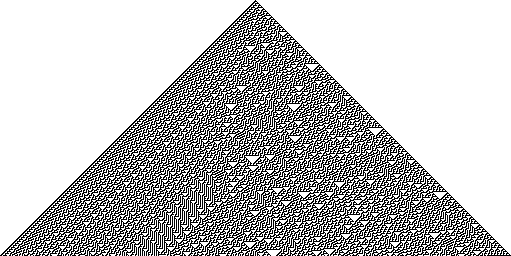Rule 30, created by renowned scientist Stephen Wolfram, is a simple algorithm that produces complex patterns and behaviour. It was first discovered when Wolfram was exploring the behaviour of cellular automata, which are simple mathematical systems composed of a grid of cells that interact with each other. Each cell has a certain number of states, from 0 to 255, and a set of predefined rules can change the states of the cells. Wolfram discovered that a simple set of rules could produce complex and unpredictable patterns, and he named this set of rules Rule 30.
Rule 30 is defined as follows: each cell can have a state between 0 and 255, and the state of a cell is determined by the states of its two neighbours and its own state. Specifically, the new state of a cell is determined by the following rule: if the two neighbours are the same, then the cell’s new state will be the same as its neighbours; if the two neighbours are different, then the cell’s new state will be the opposite of its neighbours.
One of the most interesting properties of Rule 30 is that it produces complex patterns from a simple set of rules. For example, the initial state of the cellular automata may be a random pattern, but when the Rule 30 algorithm is applied, it quickly produces patterns of complexity and unpredictability. This behaviour is known as “emergence” and is an example of how complex behaviour can be generated from simple rules.
Rule 30 has been studied extensively since its discovery, and its behaviour has been described as “chaotic” and “unpredictable”. For example, when the rule is applied to a large grid of cells, it produces patterns that are both unpredictable and chaotic. This property of Rule 30 has been used to model phenomena such as weather patterns and stock markets.
Rule 30 illustrates how complex behaviour can emerge from simple rules. It is also a reminder of the power of mathematics and the importance of exploration and experimentation. Wolfram’s discovery of Rule 30 has been an inspiration to many scientists and mathematicians, and it has shown us the potential of simple algorithms to produce complex behaviour.
If you like our work, please consider supporting us so we can keep doing what we do. And as a current subscriber, enjoy this nice discount!
Also: if you haven’t yet, follow us on Twitter, TikTok, or YouTube!









